Redness, skin peeling on the legs, appearance of cracks between the fingers, ulcer of the feet, changes in the nails: loss of glow, usual pink shadow, thickening of the plates - these and other signs indicate the development of fungal infection. Every five inhabitants of the Earth are ill in mycosis. Therefore, you need to know how the fungus looks and behaves on the legs, what causes it to appear and how to treat this unpleasant disease.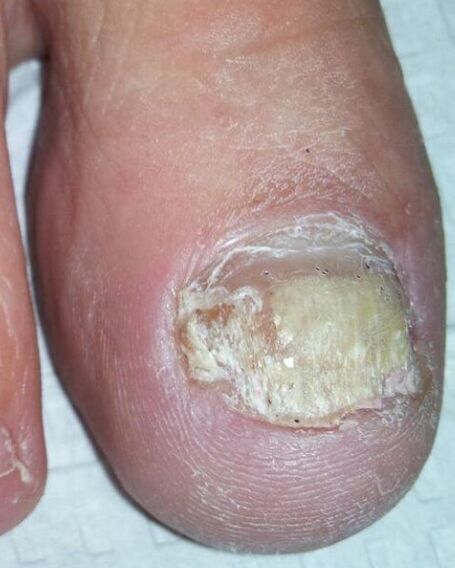
Reasons
In most cases, the infection of mycosis comes from a person directly or through the surrounding objects. The favorable conditions for mushroom reproduction are fever and humidity. Disputes can maintain viability in a dried state, after poor quality processing of manicure devices.
The main causes of the disease are as follows:
- Lack of regular legs.
- Accommodation with a mushroom with a person.
- Use someone else's shoes and socks.
- Stop the injuries.
- Visiting the "mushroom" common rooms (beaches, baths, pools).
- Insufficient processing of accessories for pedicure.
- Wear tight shoes from synthetic materials.
- Professional damage (high temperature and humidity conditions).
- Shoe shooting in a shop without socks or separation.
Fungal diseases of people develop faster in the background of functioning, and changes leading to suppressing immunity, local circulation and skin changes. The causes of the body are as follows:
- endocrine pathology (diabetes, obesity);
- pregnancy;
- immune deficiency conditions;
- increased sweating;
- foot diseases;
- vascular disorders;
- chronic skin diseases (eczema, psoriasis);
- Long -term intake of drugs suppressing immunity (corticosteroids, cytostatics).
Types of pathogenic fungi
The fungi of the human body feed on proteins - keratin, elastin, collagen, their division with enzymes: keratinase. Localization of micosis depends on keratinase activity and various keratin -type digestive ability.
The mycosis of the legs cause the types of the following type of fungus:
- Trichophyton rubrum-the type of fungal saprophytes that live in keratinized skin. The cutting of lichen, the epidermis damage, causes the nails in 80 % of cases.
- The Trichophyton mentagraphytes stops epidermophytius.
- Trichophyton Internigital. On the legs, the fungus causes dermatofitosis, onychomycosis.
- Fungi Candida fungi affect the skin and nail sheets with a severe reduction in immunity, which affect the skin and nail plates with a severe reduction in immunity.
Fungal skin injuries
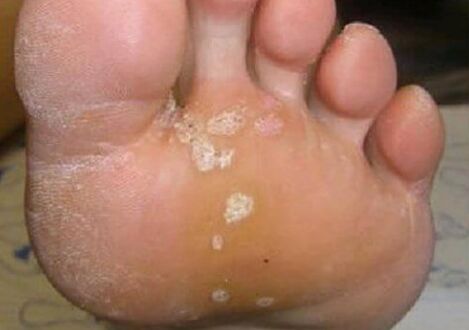
Legs from mycosis of the skin during psoriasis (sometimes called dry fungus) - red plaques with peeling and willingness to rise above the surface. Such elements are often found on their knees on the legs. This disease is not related to fungal infection.
The manifestations of the foot fungus are conditionally divided into four main shapes. The convention is a combination of clinical symptoms and transition from one to another.
In the form of intertiginous, the skin is suffered in interdigital spaces. The skin of the feet manifests itself in the form of fungus itching and combustion and is accompanied by an unpleasant odor. The infection often affects the legs between 3 and 4, 4 and 5 intervals. The skin becomes red, moisturized, ulcer, crying areas appear between the fingers. These signs develop independently or in the background of an existing epithelium.
Note! Typical Intertiginic lesion is a secondary bacterial infection that exacerbates the disease. Bacterial, micotic eczema develops, not only on the foot, the ankle inflammatory elements appear, lowered.
The advanced squamous hyperatic shape looks like the usual huge corn on the soles with cracks. Initially, mycosis of the skin of the legs can attract attention with dryness, peeling of the feet of the feet, and limited coarse corn on the heel. People regard such symptoms as individual characteristics and do not turn to a dermatologist. The skin damage can be itching and burning. If you look at the fungal photos of the legs with such a form of mycosis, then the skin of the feet is thickened (and as it was in the moccasins) in the background of deep cracks. Such manifestations are painful. The squamous shape is characterized by the involvement of the nail sheets and the backlog behind the nail bed.
The dyshydrotic (vesicular) shape of the foot fungus is rare. The main symptom of the disease is the formation of bubbles with thick shell and transparent content. These are locally located on a single side of the foot, as a single or drainage formation. The bubbles are then opened with the formation of erosion, with a messy bark around the edges. The complications of bladder lesion are as follows:
- Toxic-allergic reactions. They develop for 4-6 days, often symmetrically localized: swollen reddish papules on their feet, lower leg, forearm, face, mucous membranes.
- Connecting secondary bacterial or viral infection with the formation of eczema.
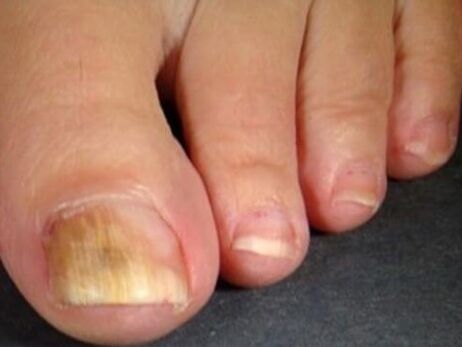
The broken shape of the fungus is characterized by minimal lesions on the legs, so it is not easy to recognize. The main signs are the appearance of bowel peeling, the formation of micro -caces between the fingers, discomfort, burn. With a long course, the nail plates are involved.
Nail fungus
Onychomycosis appears on the fingers of the skin on the feet, without the problem and the proper treatment.
The first symptoms and symptoms and signs of onychomycosis can also be undetected. Pick up the relationship with the nail mushrooms of the legs and contact the dermatologist:
- Changes in the color of the nail plates;
- the appearance of yellow or gray spots;
- loss of glow;
- appearance on the surface of irregularities;
- Strips in the nail structure;
- Increased crime.
There are various classifications of Onychomycosis. Divide by the appearance of the nail plate:
- Normotrophic. The fungal infection turns the color of the nails to a yellowish-gray, and the thickness and shape remain unchanged.
- Hypertrophic. This type of fungus is characterized by gross changes: the nails become yellow and thickened. If you look at images depicting this type of Onychomycosis, you may notice the typical crisisable shape of the plates. The transverse studies, relaxation and fragility of the free edge are visible. Such changes in nails are increasing. The walk will be painful.
- Onyolitic. The nail plates become thinner, change the color, peel the nail bed.
According to the localization and damage of the nail plate, the following type of onychomycosis can be distinguished: distal; side; mixed, proximal; complete; surface.
Candidiasis defeat
Otherwise, the fungus damage of the Candida genus must be taken into account. These conditionally pathogenic fungi cause deep (affecting internal organs) and surface mycoses (dermatomycosis, onychomycosis). Under normal circumstances, human immunity suppresses the growth of this fungus and a huge infection does not occur. Therefore, Candida activity manifests itself with significant disorders to protect the body and requires a thorough examination to determine the causes of immune deficiency. The first signs of infection are difficult to distinguish from injury and freezing.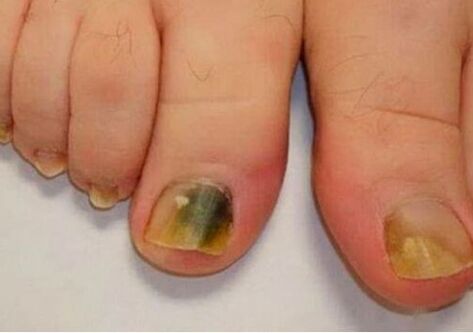
Fungal damage to the legs develops as follows:
- Inflammation of the nail rollers on the fingers of the legs with red, swelling, cracks on the skin, the appearance of discomfort in every movement. Underneath the nail sheets, a messy, separated whitish shade develops.
- Inflammatory changes in the skin disappear and the disease will be chronic. The skin around the nail thickens, not growing. The infection affects the nail plates.
- The legs nails begin to thicken to sprinkle. Their color will be brown and brown. Violation of blood supply leads to ejection.
Diagnosis
Diagnosis of the fungus on the legs includes:
- Talking to the patient (complaints, accompanying diseases, working conditions, clarification of infection).
- Control.
- Laboratory research methods (skin scraping, nails with a microscope, a dedicated plant by determining the sensitivity of the drugs, nominated for G Aspergille).
Treatment
The fungus on the legs requires immediate treatment prescribed by a dermatologist (or myologist). You can do the tasks on an outpatient basis.
Treatment of the fungus How and how to treat the legs:
- localization of the pathological process;
- degree, severity of defeat;
- the presence of concomitant diseases;
- sickness;
- Women therapy - a fact of pregnancy, breastfeeding.
Treatment of fungus on the legs takes a lot of time and its main purpose is to disappear in the infection clinical and laboratory signs. The incomplete treatment process leads to a decline in the disease.
Medication
Medication is performed using antifungal drugs, which not only kill mykosis, but also promote the removal of inflammation and elimination of secondary infection.
Divide:
- Local. Apply to the lesion (ointment, gel, cream, spray, varnish, solution).
- Systemic - take it orally (tablets, capsules, solutions).
In the early stages of fungal infection, medication is limited to the appointment of local funds. In the case of general mycosis, a systemic antimycotics relationship is required.
Treatment with folk drugs.
There are many recommendations on how to get rid of the fungus on the feet of folk and home cures. Most for external use and some - inward. However, you should not drink and apply dubious compositions to your feet in the hope of bringing neglected mykosis. Such folk methods can damage health.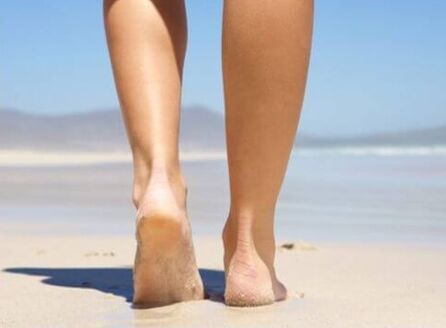
Note! The most common and most effective home medicine in the fungus is the legs of salt, soda, essential oil legs. These therapeutic procedures prepare the legs and nails for the use of drugs.
Surgery
In the event of a huge fungal damage, the nail plates must be removed. This method is safe and there is virtually no contraindication. Alternative to surgical manipulation - the use of paste and ointments to soften the nails, followed by the removal.
Laser treatment
The use of the laser is based on overcoming onychomycosis on heating and destroying fungal spores. This technique allows systemic treatment to be contraindicated in patients who are safe and applicable to rapid onychomycosis.
Treatment of dermatomycosis
Local antifungal agents are used on the legs to start treating the fungus. If the disease does not improve after a two -week treatment course, an antimycotic agent is required. In case of serious injury, the skin fungus requires a recipe for systemic drugs. Therapy continues until the infection is completely removed.
Onychomycosis treatment
Local drugs are prescribed to eliminate the initial manifestations of nail fungus. Mycosis with more than 2/3 lesion of the nail area, which includes a growth zone, distribution to other plates - a signal for taking systemic drugs. Onychomycosis, with mass destruction of nail sheets, is treated by surgical removal of the affected tissues of the nail. This method provides access to the focus of the infection.
Important!
The treatment of onychomycosis is performed before the cultivation of healthy nails and can last up to 12 months.
The appearance of the fungus on the legs can be caused by various causes. Health -related attitudes help to detect the disease in time and begin treatment.



























